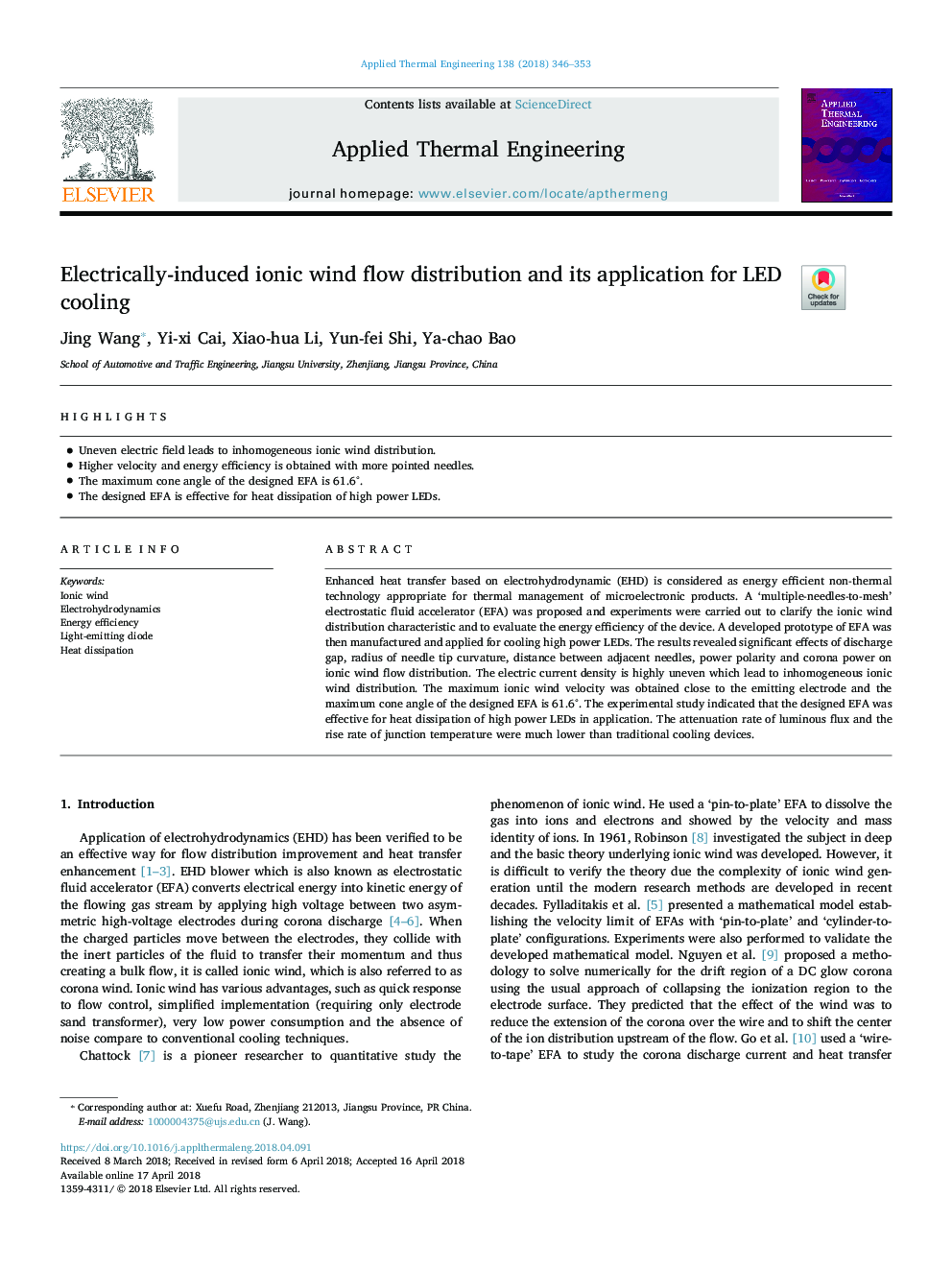| Article ID | Journal | Published Year | Pages | File Type |
|---|---|---|---|---|
| 7045258 | Applied Thermal Engineering | 2018 | 8 Pages |
Abstract
Enhanced heat transfer based on electrohydrodynamic (EHD) is considered as energy efficient non-thermal technology appropriate for thermal management of microelectronic products. A 'multiple-needles-to-mesh' electrostatic fluid accelerator (EFA) was proposed and experiments were carried out to clarify the ionic wind distribution characteristic and to evaluate the energy efficiency of the device. A developed prototype of EFA was then manufactured and applied for cooling high power LEDs. The results revealed significant effects of discharge gap, radius of needle tip curvature, distance between adjacent needles, power polarity and corona power on ionic wind flow distribution. The electric current density is highly uneven which lead to inhomogeneous ionic wind distribution. The maximum ionic wind velocity was obtained close to the emitting electrode and the maximum cone angle of the designed EFA is 61.6°. The experimental study indicated that the designed EFA was effective for heat dissipation of high power LEDs in application. The attenuation rate of luminous flux and the rise rate of junction temperature were much lower than traditional cooling devices.
Related Topics
Physical Sciences and Engineering
Chemical Engineering
Fluid Flow and Transfer Processes
Authors
Jing Wang, Yi-xi Cai, Xiao-hua Li, Yun-fei Shi, Ya-chao Bao,
